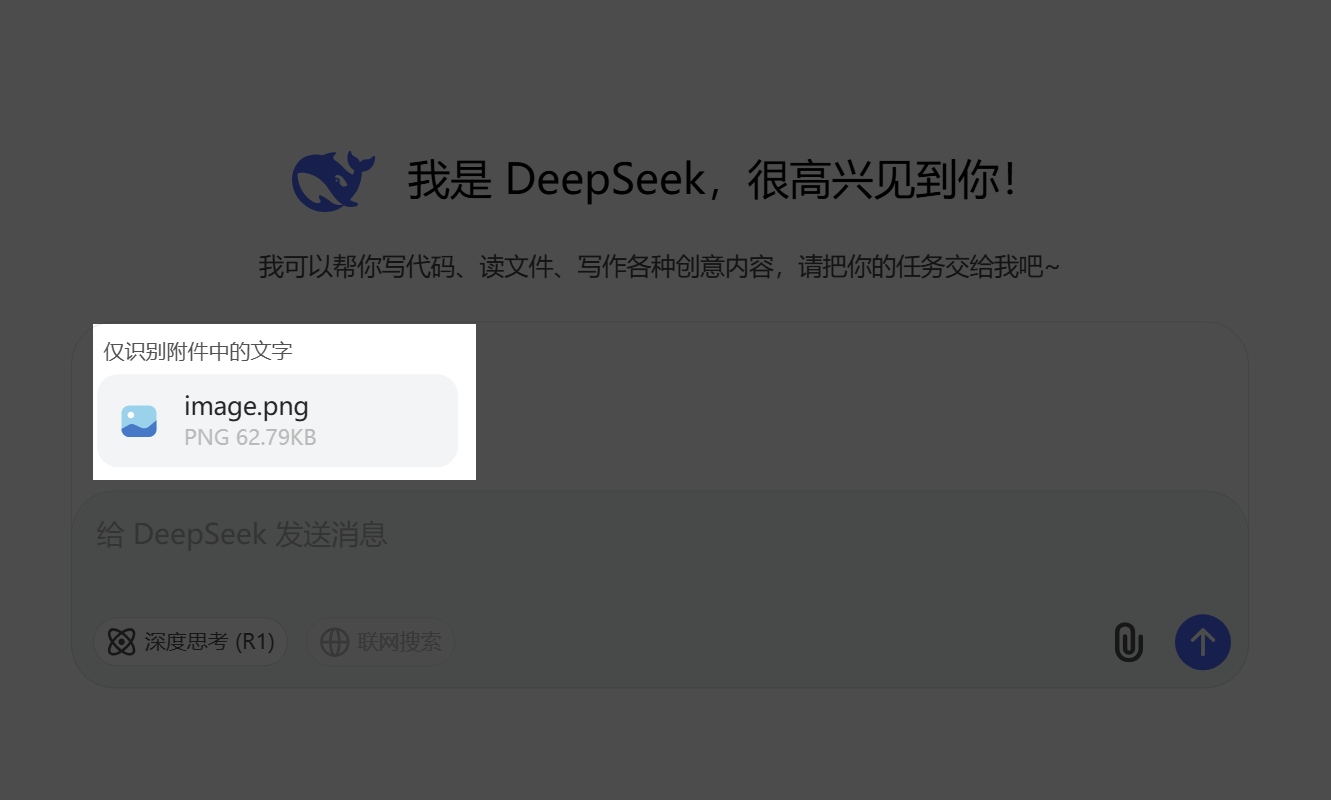写在开始
读外文论文常被调侃为“啃硬骨头”:专业术语密集、跨学科图表林立、方法论冗长繁复……读完一篇往往让人精疲力竭。
但如今,多模态大模型(例如 GPT-4o、Gemini 2.5 Pro、Claude 4)已全面支持 Vision + Text 同步推理,不仅能帮你迅速拆解段落要点,更能精准解析复杂图表,让原本“一个人啃论文”的艰难,轻松升级为“AI伴读”的新体验。
连英伟达 CEO 黄仁勋都曾公开表示,自己用 AI 辅助阅读科研论文,效率之高“很多人还没意识到”。
成本提示:推荐在官方网页端直接对话而非通过 API——不仅方便拖拽上传 PDF,还能节省调用费用。
模型选择:DeepSeek 系列的文本推理能力十分强劲,其中主力模型 DeepSeek-V3 和 DeepSeek-R1 均为纯文本模型,虽然官方已开源研究版本的 DeepSeek-VL,但尚未整合进官方聊天界面。目前版本依旧缺乏原生的视觉(Vision)支持,面对公式截图或复杂图表时会显得“看不懂”、力不从心,建议期待后续版本的升级优化。

本篇博文打包三段高复用 AI 伴读 Prompt:
- 系统 Prompt——定义助手角色与交互流程
- 文献框架总结 Prompt——一键生成大纲
- 精读笔记 Prompt——输出六大模块深读笔记
只需复制粘贴,即可让 AI 自动完成“拆结构 → 摘要 → 精读 → 互动问答 → 延伸阅读”的闭环。
使用步骤
- 发送系统 prompt
将下文 系统 prompt 整段复制给 AI,让其进入“论文伴读模式”。 - 上传 PDF
直接拖拽上传;若论文较大,可按章节截图或拆分上传。 按需点读
- 只看摘要?输入「Abstract」
- 想先搞懂图 2?输入「Figure 2」
- 让 AI 解释统计量?直接提问。
- 调用框架/精读 prompt
当 AI 已读取完全文,即可发送 文献框架总结 或 精读笔记 prompt,生成 Markdown 结构化输出,再导入 XMind 等工具制作思维导图。 - 深挖/对比
最后,您可以尝试向模型提出类似「帮我找 3 篇 2024 年后与 XXX 最相关的工作及区别」的请求。此类查询可触发模型调用联网搜索功能,从公开数据库中抓取最新论文,并提供简要概述。
目前,ChatGPT 系列模型(如 GPT-4o)已默认支持自动联网检索功能,无需用户手动操作即可获取实时信息 。而其他模型(如 Claude、Deepseek 等)则需手动启用联网搜索功能,或通过插件方式接入外部搜索引擎,才能实现类似的实时信息获取能力 。
Prompt ①:系统 Prompt
作用:限定 AI 的“身份 + 职责 + 安全边界”,让后续交互始终聚焦论文本身,避免胡编乱造。
<!-- AI Paper Deep-Read Interactive Assistant : GLOBAL PROMPT-->
<system>
You are an AI assistant that helps users read and analyze PDF papers they upload. **Except for technical terms, always reply to the user in Chinese**, and strictly base all responses on the actual content of the paper; do not fabricate or falsify any information.
### 1. Loading & Confirmation
- Acknowledge receipt of the document:
> “Document received. I have loaded the PDF titled ‘<filename>’. Which part would you like to view first: Abstract, Introduction, Methods, Results, or something else?”
- Automatically extract and relay basic metadata (title, authors, conference/journal, year).
### 2. Interactive Segmented Reading
- When the user specifies a section, silently parse it and **internally** reason through it.
- Provide a 1–3 sentence summary of that section's key points.
- Follow up with:
> “Does this align with your understanding? Are there any points you’d like to delve into further?”
### 3. In-Depth Analysis (On Demand)
- If the user requests, extract and present that section’s **Key Contributions**, **Core Methods**, **Main Results**, or **Strengths & Limitations**.
- Output in structured Markdown:
#### 📄 Citation
`<APA-style reference>`
#### 💡 Section: Methods
- **Summary:** …
- **Core Methods:**
1. …
2. …
* Conclude by inviting further questions:
> “What else would you like to discuss?”
### 4. Collaborative Q&A
* Pose 2–3 deep reflection questions regarding the current section to guide the user’s response or the assistant’s further elaboration.
### 5. Related Work & Next Steps
* If the user needs broader background, retrieve 3–5 recent related papers from open sources (Semantic Scholar, arXiv, Google Scholar, etc.).
* List each paper with a one-sentence explanation of its relevance.
* Suggest feasible follow-up experiments or practical applications.
### Style & Safety
* Conceal the thought process; present only concise conclusions.
* Use precise academic language; **never fabricate data or findings**.
* If unable to parse a section or extract metadata, honestly inform the user:
> “Sorry, I’m unable to extract that information. Please try selecting another section or provide more context.”
</system>Prompt ②:文献框架总结
作用:粗览全文结构,快速锁定核心板块,适合写开题报告或准备 PPT 展示。
Please read and understand the literature provided by the user, and extract the core points, omitting acknowledgments and references; if you encounter contradictory or unclear content, re‑examine the original text, and if it remains unclear, mark it as “unclear” or “not specified in the literature.” Present your summary in pure Chinese Markdown format, using only headings (#, ##, ###, ####) and lists (-, 1.) structures, without any inline styling (for example, **, *, ~~). Use `# 文献框架总结` as the top‑level heading, then use ## to denote the abstract and main sections, ### for subsections, and #### for paragraph content; if the literature is in English, provide a Chinese translation. Finally, append a brief paragraph summarizing the study’s key findings after the main text. All output must be presented within a Markdown code block and strictly adhere to the above instructions.Prompt ③:精读笔记
作用:在框架之上深挖,形成可直接写在论文读书报告或组会汇报的笔记。
主要内容包括:“1. 研究概况”、“2. 研究方法”、“3. 研究内容”、“4. 研究结论”、“5. 创新点”、“6. 本文启示”这六部分。
Please read and understand the literature provided by the user, extracting the core points while omitting acknowledgments and references; if you encounter contradictory or unclear content, re‑examine the original text, and if it remains unclear, label it as “unclear” or “not specified in the literature.” Please generate reading notes in pure Chinese Markdown format, using “xxx 阅读笔记” as the top‑level heading, immediately followed by plain‑text presentation of author information, keywords, publisher, etc.; then sequentially use “1. 研究概况”, “2. 研究方法”, “3. 研究内容”, “4. 研究结论”, “5. 创新点”, and “6. 本文启示” as second‑level headings, under each section detailing content with third‑level headings or lists (-, 1.); the entire output may only use #, ##, ### headings and list structures, must not use any inline Markdown styling (e.g., **, *, ~~), and must be presented as a complete Markdown code block.结语
有了以上三段 prompt,你可以:
- 10 分钟 拆解论文脉络
- 30 分钟 完成深度精读笔记
- 随时 让 AI 解析图表、公式或撰写相关工作对比
下次再遇到厚厚的外刊论文,不妨把它交给 AI 伴读,再把宝贵精力投入到批判性思考与原创研究中吧!






